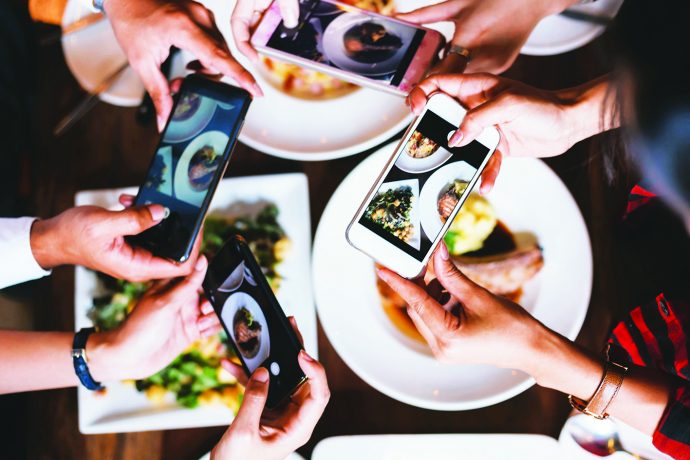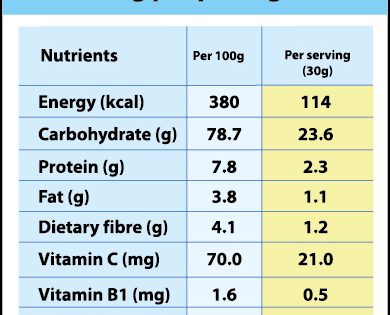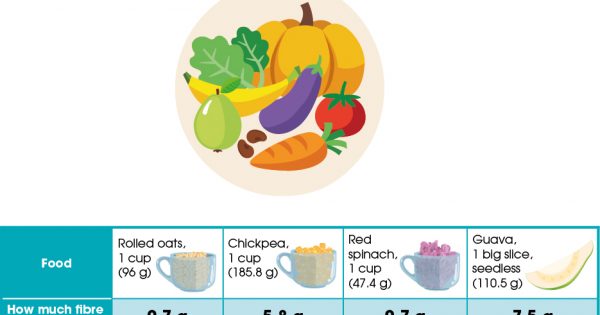Boba tea, spicy ramen, cheesy fried chicken, and many other food trends come and go. What do they all have in common? For one thing, they are made viral through the media, more often in social media such as Facebook and Instagram, and secondly, majority are unhealthy foods.
Do you know that social media can influence the way you eat and your food choices? Be a discerning consumer – do not be unduly influenced by food trends spread through social media.
In this digital age especially, our eating habits and decision making processes are to a large extent determined by numerous smartphone apps, television programmes and social media. Cases in point: the Instagram ritual of taking pictures of your food before actually eating it, people lining up for hours to buy the latest must-have food or drink that is all the rage online, and even live- streaming their lavish dinners!
These are mainly driven by the chase for “likes” and comments – the instant gratification of virtual attention. Sure, the occasional food- hunt with friends may not be harmful, but we need to be cautious about how much influence social media has on our dietary intake and how not to be misguided. Though they may be much more tech-savvy, the younger generation is also easily swayed by these food trends as shown by the National Health and Morbidity Survey (NHMS) 2017 of Malaysia on adolescent health. Social media and television were reported as the main media sources affecting dietary pattern of adolescents in Primary 4 to Secondary 5.
How media affects dietary pattern of adolescents?
- Social media = 37.9%
- Television = 36.7%
*Based on NHMS 2017
Why the worry?
The Roman saying “We eat first with our eyes” points us to the issue at hand. Our sight is the first sense involved in the process of eating, before smell and taste. We like looking at colourful and beautifully decorated meals and social media has made it easier with a few taps on the screen. This urge to look at food is what scientists call “visual hunger”, which leads to “external eating”, where the sight or smell of food (external cues) arouses the craving to eat, despite the absence of physical hunger (internal cues). Even worse, external eating is linked to overeating and this may result in the rise of obesity.
Moreover, food trends are usually catered to indulge our senses. That is how we are persuaded into becoming repeat customers. The scary fact however is, the boba tea you love so much may contain up to 20 spoonfuls of sugar, the cheesy fried chicken is high in fat and calories, and your guilty pleasure, that deliciously spicy ramen, may upset your stomach and lead to a bad date with the toilet.
What can we do?
The first step is to realise the subconscious effect of media exposure to our consumption habits. Next: educate ourselves and take action!
Is there a healthy food trend?
Not all food trends are unhealthy. What is important is to practise healthy eating guidelines such as the principles of Balance- Moderation-Variety (BMV), Food Pyramid and Malaysian Healthy Plate. Look for nutritional information of these foods if available. Healthy trendy foods such as poké bowl (Hawaiian seafood salad), kombucha tea (fermented tea) and overnight oats are actually a good option.
Can we avoid the temptation?
Unrestrained temptation leads to unhealthy eating patterns such as overeating, consuming excessive sugar, salt, oil or fat, as well as unbalanced meals. This brings dire consequences such as obesity and non- communicable diseases (e.g. diabetes mellitus, heart diseases, and cancer). There is no harm in trying boba tea or other food trends, but do so in moderation by controlling your consumption (make it a once-a-month treat) or choosing healthier options (e.g. less sugar). Be rational and remember it is just a trend that will soon pass!
What are the alternatives?
Why not prepare your own healthier version? Use healthier cooking methods (e.g. grilling or baking instead of deep-frying fried chicken) and ingredients (more whole grains, vegetables, spices and herbs; less fat, oil, salt and sugar). This way you can also tailor the taste to your liking (e.g. spiciness level). You can also balance your meals by having more veggies and fruits for dinner, if lunch was burger and fries. If you must try the food at the restaurant itself, ask for less sugar, salt and sauce, or have smaller portions by sharing with family or friends.
How to use social media better?
Social media can also be a source of inspiration for healthy eating and active living. Fellow healthy eaters can share more ideas for your meals. Many credible experts also share their opinions on latest issues on social media. Among sites and pages you can follow are Positive Parenting, Nutrition Month Malaysia, Nutrition Division of Ministry of Health Malaysia, and World Health Organization.
Trends or passing fads can be fun to follow, but it is better to set a healthy trend for ourselves and our family to practise healthy eating. Remember: be cautious when using social media and do not get tricked into mindlessly following food trends!
An educational collaboration with Nutrition Society of Malaysia.







Comments